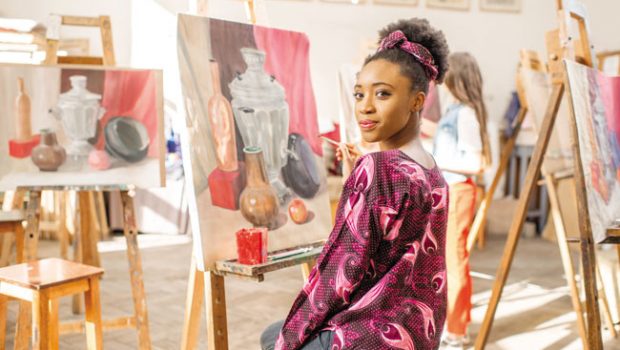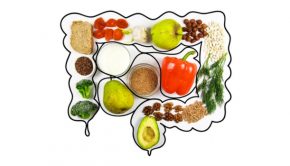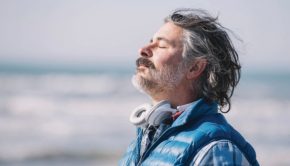THE ART OF HEALING
Creative Therapy Aids Recovery
by Marlaina Donato
For decades, creative expression has been a valuable tool in healing, and expressive arts therapy—the integrated application of two or more art forms—is now considered a life-changing modality for veterans and anyone else struggling with anxiety or post-traumatic stress disorder (PTSD).
Also called creative arts therapy, this form of psychotherapy helps patients to process and express what is often beyond verbal language using music, art, dance, theater and writing as its primary modes of communication. “Individuals need no previous arts experience in order to benefi t from working with a certified creative arts therapist,” explains Azizi Marshall, founder and CEO of the Center for Creative Arts Therapy, in Downers Grove, Illinois.
The National Intrepid Center of Excellence— an outpatient clinic specializing in traumatic brain injuries at the Walter Reed National Military Medical Center, in Bethesda, Maryland—ranks creative arts therapy among the top five most eff ective approaches in helping veterans.
A study of combat veterans and creative arts therapy conducted at Concordia University, in Montreal, reported considerable progress, especially in areas of expressing emotions resulting from trauma and gaining understanding of symptoms such as depression, thoughts of suicide and insomnia.
Psychotherapist Cathy Malchiodi, Ph.D., has authored several books, including The Art Therapy Sourcebook, and uses expressive arts therapy in her Louisville practice. “I’ve worked with soldiers for the past 10 years, and find that much of their healing comes about through telling their stories on stage or participating as an actor within a play or improvisation.” Malchiodi also incorporates mindfulness practices, visual arts, music and some simple forms of yoga in her sessions.
Creative Arts Therapy for Multiple Diagnoses
Expressive arts therapy is also making a positive impact on those suffering from panic attacks, obsessive-compulsive disorder, addictions, eating and attention disorders, dementia and chronic physical illness. “Creative arts therapy can be used across life challenges; for example, dance or movement therapy has supported women with breast cancer and eating disorders,” says Marshall, who has also witnessed the power of drama therapy to help reduce feelings of fear in clients diagnosed with anxiety and PTSD.
A 2015 study at Butler University, in Indianapolis published in the Journal of Speech Pathology & Therapy shows the significant effects of theater arts on individuals with autism spectrum disorder. “Creative arts therapy can be successful in supporting children with autism, especially ways to practice social skills,” says Marshall. “The drama therapist uses role play, improv and games in order to facilitate interpersonal communication.”
Dopamine and Creating Art
Th e multitasking neurotransmitter dopamine is one of the brain’s natural antidepressants and plays a key role in feeling pleasure and reinforcing habits. It reaches its highest levels during the initial stages of love, observing something of beauty or creating art. A recent Drexel University study published in Th e Arts in Psychotherapy shows the neurological effects of drawing, coloring and simple doodling. Increased circulation in the area of the brain correlating to pleasure and reward was evident, and this dopamine- dominant response is responsible for decreasing symptoms of anxiety and increasing feelings of joy and accomplishment.
Psychotherapist Doreen Meister, in Oakland, California, encourages her clients to focus on the process of creating, rather than the result. “Expressive therapies are an extension of the self discovery continuum. I oft en hear, ‘I draw like a 2-year-old.’ To this I say, ‘Great! Draw like a 2-year-old!’ I believe that somewhere, many of us are told that creative expression must be a certain way. Creativity is a natural state, a human quality that we are born with, and the product of creation is not as important as the process.” Creativity from a clinical perspective allows for new emotional vantage points, distance from situations and viewing experiences through a different lens. “Bringing in creativity off ers a wider palette of tools or access points, and gives us another way to understand ourselves,” says Meister. “Creativity as a life force is accessible to all of us.”
Marlaina Donato is an author and composer. Connect at AutumnEmbersMusic.com.





























